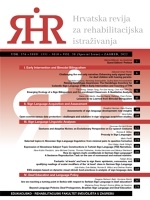Lessons to be Learned from Bimodal Bilingualism
Lessons to be Learned from Bimodal Bilingualism
Author(s): Diane Lillo-Martin, Deanna Gagne, Deborah Chen PichlerSubject(s): Language acquisition, Psycholinguistics, Educational Psychology
Published by: Sveučilište u Zagrebu, Edukacijsko-rehabilitacijski fakultet
Keywords: bimodal bilingual; language acquisition; heritage language; sign language; deaf;
Summary/Abstract: This article presents a selective overview of topics related to the language experience of early bimodal bilinguals - individuals who are raised from an early age using two languages from two different modalities, typically spoken (or written) and signed. We show that deaf and hearing bimodal bilinguals may display patterns of bilingualism that are similar to unimodal bilinguals in some ways, such as the use of both languages in a single situation or even a single utterance. Nevertheless, there are also differences between bimodal and unimodal bilinguals, and differences among different subgroups of bimodal bilinguals, given large variation in relative access to the dominant and minority language(s) in their environment and their differential experiences in schooling and interactions with potential interlocutors. Moreover, we review studies discussing potential advantages of the sign modality and advantages of bilingualism in this population. We hope to highlight the importance of considering children’s overall language experience, including the age(s) at which they are exposed to each of their languages, the richness of their experiences with each of the languages, and the ways that the language-learning experience may contribute to the child’s linguistic and cognitive development.
Journal: Hrvatska revija za rehabilitacijska istrazivanja
- Issue Year: 58/2022
- Issue No: Spec. Iss.
- Page Range: 83-97
- Page Count: 15
- Language: English

